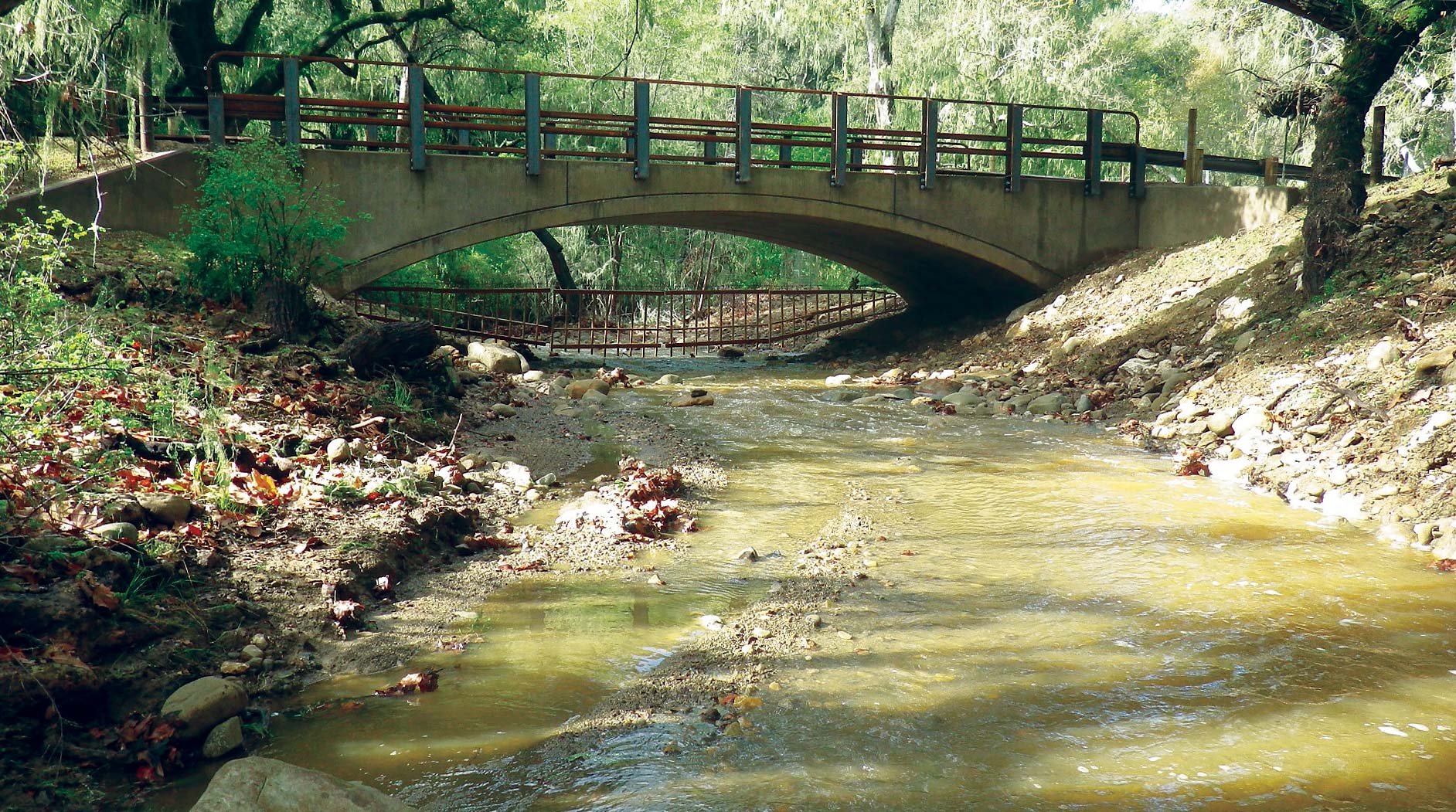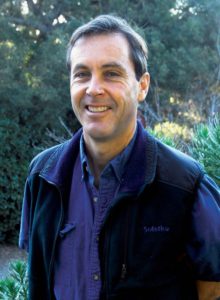
Project: Fish passage improvement
Restorationist: Tim Robinson, Ph.D., Senior Resources Scientist and Fisheries Division Manager, Cachuma Operation and Maintenance Board
Endangered Southern California steelhead are getting a big boost thanks to Tim Robinson, who’s working with his colleagues in the Santa Ynez Watershed in Santa Barbara to restore access to upstream habitat for these struggling fish, bridge by bridge.
Quiota Creek’s seen a lot of man-made improvements over the years, which means concrete culverts that restrict the flow of water and keep fish from traveling upstream on their critical journeys back from the ocean to lay eggs. Replacing these restrictive structures with beautiful pedestrian bridges allows the waterway to flow freely while making sure people can still get across.
Bridge by Bridge, Fish Make it Home

To date, Tim and team have worked on projects that’re removing 8 of 11 barriers along Quiota Creek, and have used the Sustainable Conservation-sponsored Habitat and Restoration Act for three of these important projects.
Southern California steelhead have spent 20 years on the nation’s endangered species list, and more restoration is needed now than ever to ensure they can survive. The results? Tim’s been able to DNA-type fish specifically to Quiota Creek, which means he can track a fish that’s matured in the creek, travelled out to the ocean and returned to spawn in the stream where it was born.
“Trimming time off the permitting process means a lot when we’re up against funding deadlines and encroaching winter weather to get these projects in the ground. The restoration community needs help to recover these fish, and we’re grateful for the HRE Act’s insightful support.” – Tim Robinson
Good restoration takes a community, and it’s happening all over California to help animals, plants and resources come back from the brink. The more resources and tools we can craft together with the agencies and people tasked with stewarding California’s lands, the better off our endangered species and struggling habitats will be.
